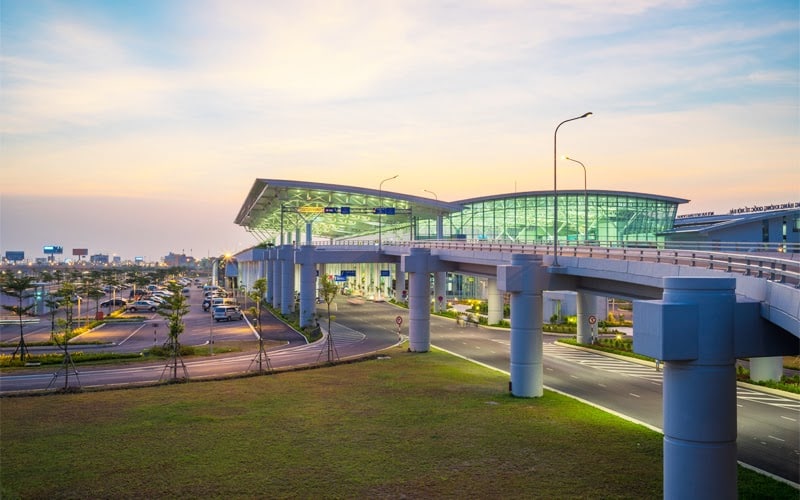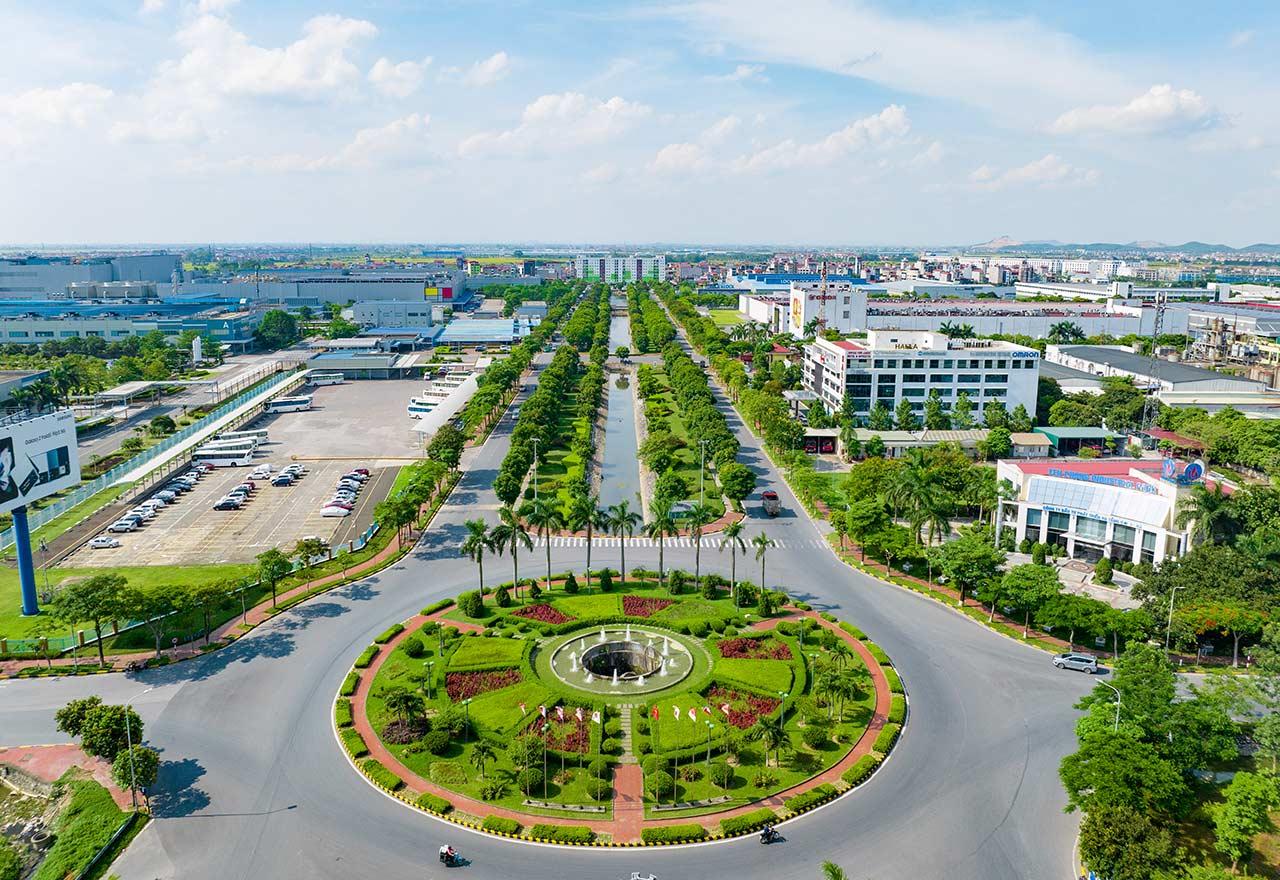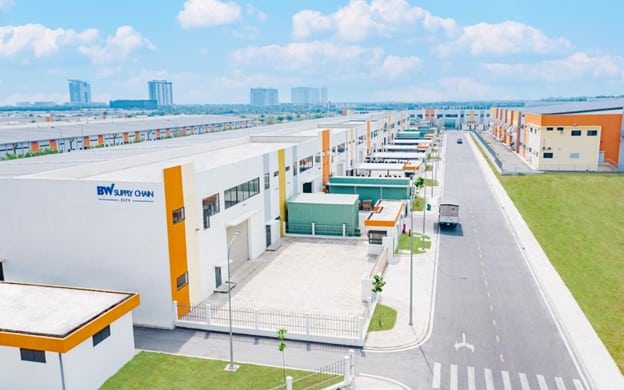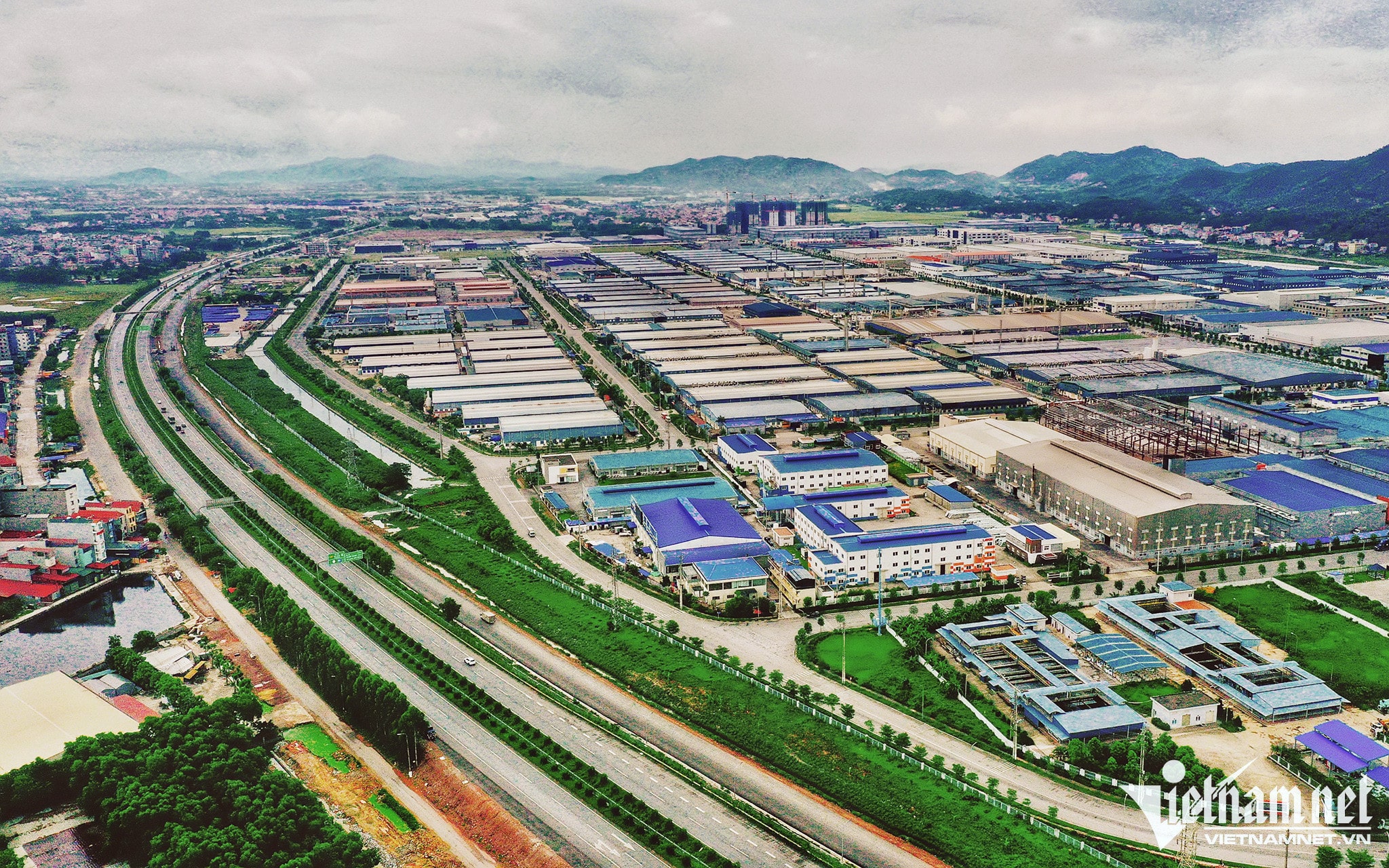Many investors are interested in commercial vs. industrial real estate topics. Both are key sectors in the construction industry that can benefit businesses, depending on the purpose of the investment.
Various factors separate commercial and industrial property and can affect your investment decisions. This article will provide you with information to help you differentiate these two types of property.
What is Commercial Property?
Commercial real estate is any property that generates profit, is rented out, or is used for investments. It includes various categories and can be either owned or leased. Since residential and commercial properties may be subject to different tax laws, understanding commercial real estate before investing is important. It is a good resource of long-term wealth and tax-advantaged income for investors.

Types of Commercial Property:
– Office buildings: Office buildings can be given for rent under a method called triple net leases, where tenants pay rent, property maintenance, repairs, taxes, and insurance. The third-party property management firms will handle tenant issues and pay bills.
– More-than-5-unit apartment buildings: Commercial property, including small to large apartment communities, is owned by investors seeking financial gain. These properties are easily accessible, a reliable cash flow generator, and are often sold, making them an attractive investment option.
– Medical offices are commercial buildings designed for healthcare purposes. They typically have exam rooms, patient waiting areas, and specialty building systems.
– Retail shopping centres: Many investors prefer this type of property due to the long-term triple net leases, where tenants pay for all expenses, and as rents increase, returns continue to improve. There are various types of retail and shopping centres, including anchor tenants, power centres, big box retailers, strip centres, credit tenants, mom-and-pop tenants, and pad sites.
– Self-storage facilities: Self-storage facilities are becoming increasingly popular as people downsize and need a place to store their belongings. These facilities can range from one to multiple-story buildings, with units ranging from 5×5 to 10×30 feet and rentable 30,000 to 120,000 square feet.
– Warehouses: These are small-scale warehouses located in urban centres or mixed-use areas. This type of commercial property is needed mainly by small businesses and retailers.
– Industrial complexes: This category includes retail, office space, light manufacturing and assembly, and distribution. The preferred location is near major transportation hubs to benefit from shipping costs and time.
– Hotels, motels, resorts: These properties can make huge profits, especially during tourism seasons. Though many of them are family-run, experienced investors see this as a lucrative market sector.
– Mobile home parks: Mobile home parks, also known as trailer parks or manufactured homes, are commercial investments that combine land and mobile homes. They are often owned by mom-and-pop investors and offer cash flow, minimal maintenance, and potential profit centres.
What is Industrial Real Estate?
The increasing use of technology in various industries is altering the composition of industrial real estate, benefiting properties like research and development and warehouses serving as distribution centres. Industrial property includes land, structural improvements, and equipment for material conversion into finished products.

Types of Industrial Real Estate:
– Warehouse properties: Warehouse properties in industrial real estate are large, open spaces for goods storage and distribution. They are typically 50,000 square feet with office space and an 18-30 foot ceiling height.
– Manufacturing buildings: This type of building is specialized for production processes and often requires heavy-duty machinery, specific infrastructure, high ceilings, and appropriate floor height and dock height loading for overhead cranes.
– Office showrooms: Office showrooms, single-story or mezzanine structures with 10—to 16-foot ceilings, are used as administrative hubs and product display areas. Less than 15% of these structures are office space.
– Flex space structure: Flex space structures are single-story buildings with 10—to 18-foot ceilings, offering flexibility for tenants with changing needs. They can be utilized for distribution and retail, office space, light manufacturing, and storage.
– R&D: Research and development facilities are specialized areas with 10-15 foot ceilings, up to 50% office/dry lab space, and dock-height and floor-height loading. They are used for scientific experimentation, invention, and product development.
Read more: Types of Industrial Properties – Discover 6 Main Categories
Commercial vs Industrial Real Estate: What are Differences?
Besides different types of real estate, the difference between industrial and commercial property lies in their intended use. Industrial types are for manufacturers and businesses dealing with production, while commercial types suit ventures with the intention of profiting from the properties.
Does commercial real estate include industrial? Yes, industrial property is one of the four major commercial real estate types. Commercial real estate can include some industrial facilities, such as warehousing, manufacturing, distribution, and logistics centers.
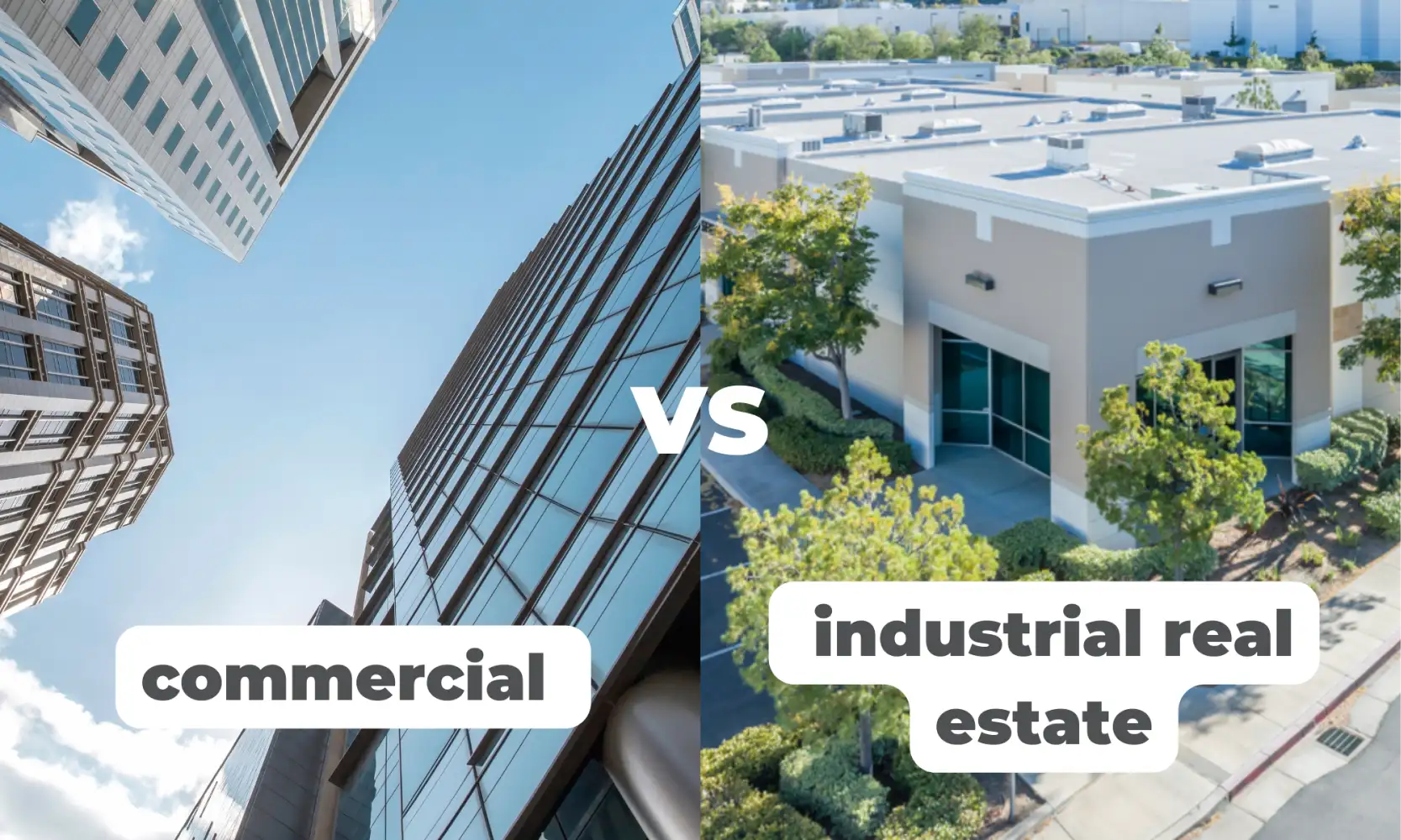
Here are the explanations for your reference.
Property Characteristics
1. Commercial real estate
– Draw in clients and customers by emphasizing comfort and beauty.
– Location and visibility are critical.
– A prime location improves a company’s reputation.
– Demand modern facilities, accessible entrances, and plenty of parking spaces.
– Emphasize efficiency and usefulness over aesthetics.
– High ceilings, open floor designs, loading docks, and ample storage are among the critical features.
-Usually located close to suppliers, distribution hubs, and transportation routes.
2. Industrial real estate
– Designed for machinery and heavy equipment.
Lease Terms
1. Commercial real estate
– Long-term contracts are more common since regular relocations cause disturbances to the operations of the clients.
2. Industrial real estate
– A shorter duration of terms is more common due to specific seasonal demand.
– Longer terms are for extensive infrastructure tenants.
Tenant Types
1. Commercial real estate
– The tenants are retailers, corporate offices, restaurateurs, medical facilities, and service providers, who usually search for commercial properties with visible locations and good traffic flow to serve customers.
2. Industrial real estate
– Industrial real estate serves tenants who prioritize efficient goods flow, smooth operations, and transportation spaces, such as manufacturing, warehousing, distribution, and logistics businesses.
Mechanical, Electrical & Plumbing
1. Commercial real estate
– Standard systems for efficient lighting, heating, and cooling.
– Plumbing for kitchens and restrooms.
– Heavy-duty HVAC systems.
– Large-scale plumbing networks.
2. Industrial real estate
– Complex electrical systems.
Location & Environment
1. Commercial real estate
– Easy visible and accessible Usually located in urban and suburban.
– Near to public transportation and highways.
– Environmental factors, including pollution control, waste management, and zoning, are taken into consideration.
2. Industrial real estate
– Located in remote areas.
Safety Risks
1. Commercial real estate
– Although there are often fewer safety hazards in commercial buildings than in industrial construction, safety precautions are nevertheless necessary to safeguard employees and the public.
2. Industrial real estate
– Safety is important to reduce the risk of high voltages, chemicals, heavy machinery, and potentially hazardous materials.
Read more: Is a Warehouse Industrial or Commercial? Types of Warehouse
Expand Your Property Investment with Savills
By thoroughly studying and comparing their various qualities, which range from site dynamics and market trends to rental yields and tenant profiles, the article provides readers with the required information to confidently traverse the complexity of the real estate market.
Whether one prefers the stability and long-term leases of commercial buildings or the opportunity for higher profits inherent in industrial real estate, this comparative study explains the distinct benefits and considerations connected with each asset type. With this knowledge, investors may determine which property type best fits their investing objectives, risk tolerance, and financial goals.
Savills Industrial Vietnam is the leading industrial real estate team, providing the best investment sources and helping many investors expand their property portfolios. If you’re looking for property investment opportunities in Vietnam, don’t hesitate to contact us today.




